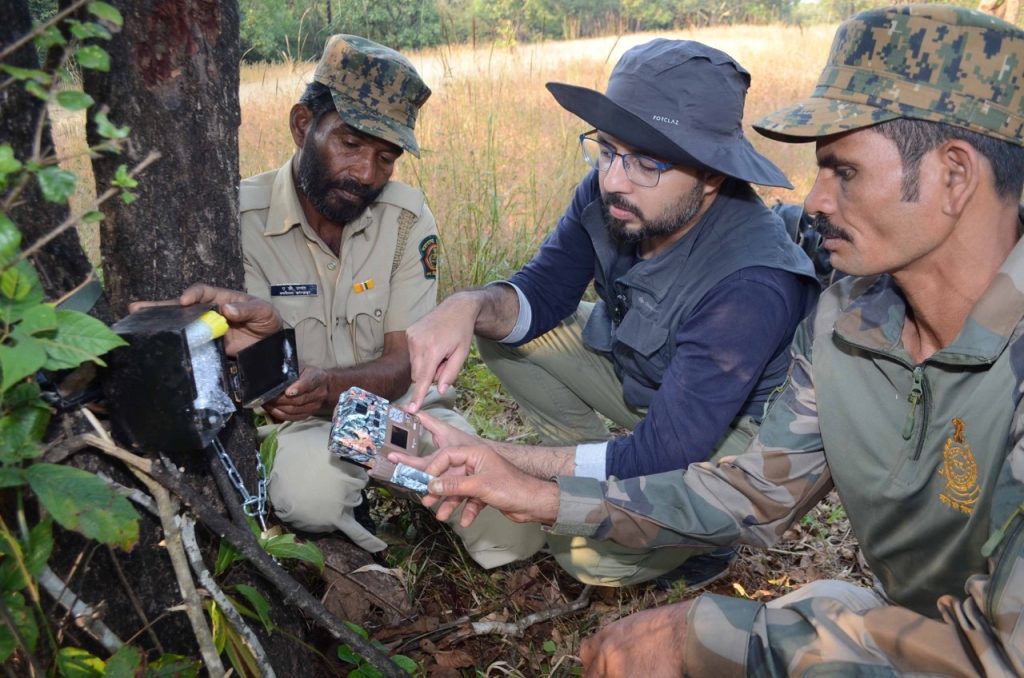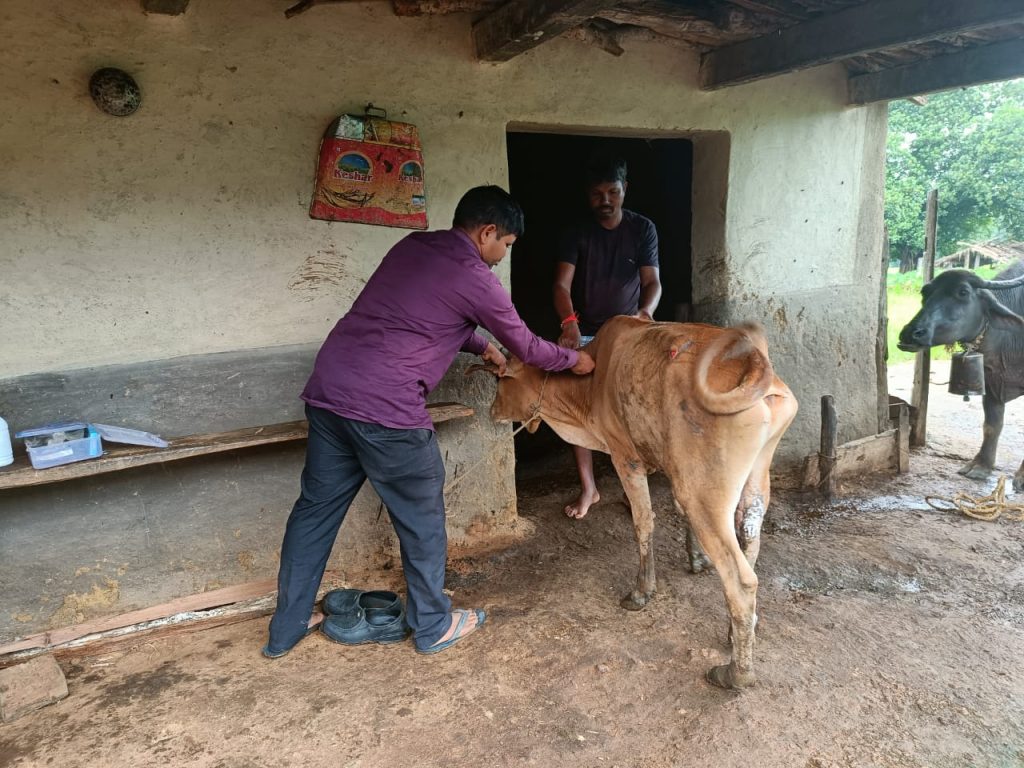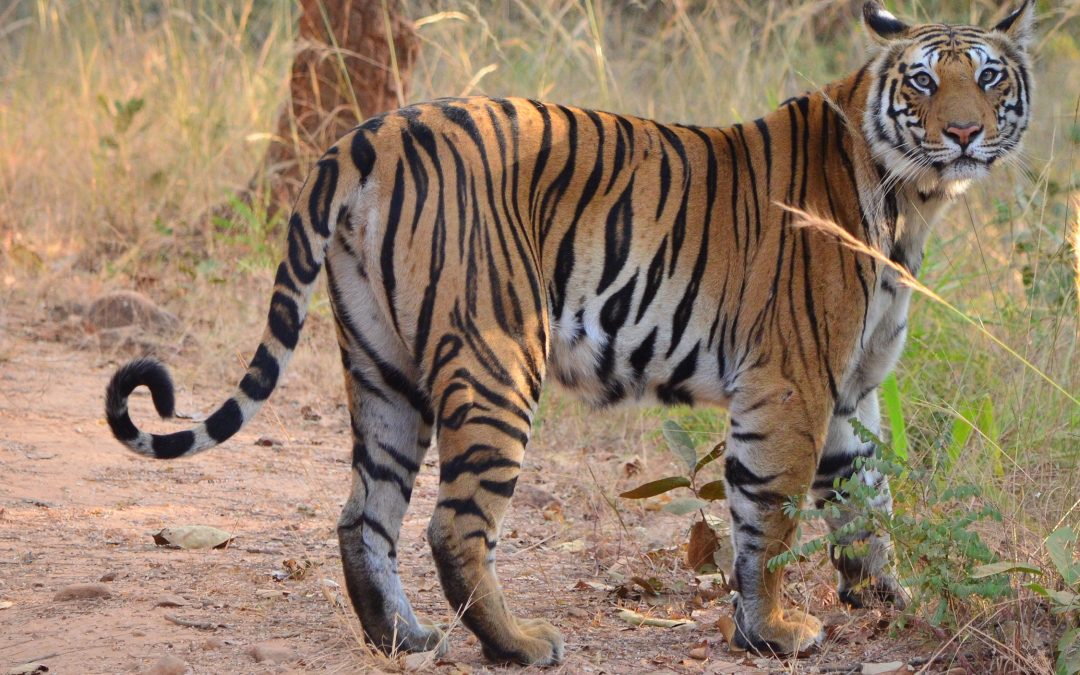SLTP partners shared their expert views on the recently released tiger number estimates for India. The estimation adds up to 3167, an increase of around 6.7% as compared to the 2018 figures. While partners celebrate the success and the hard work of all the green guardians, they also stress on the need to mitigate some existing challenges.
Kishor Rithe, founder of SLTP partner Satpuda Foundation, mentioned, “The report is realistic and shows the tough path ahead to increase this population further. Tiger conservation in the corridors will be the most difficult challenge ahead to retain and increase this population further.”
His foundation is undertaking a range of initiatives for the local communities such as the provision of basic healthcare, sustainable livelihood opportunities as well as awareness and education programs to encourage them to conserve their surrounding tiger habitats.

An awareness program being conducted by the Satpuda Foundation team
Furthermore, Anish Andheria, president of SLTP partner Wildlife Conservation Trust (WCT), which undertakes a host of programs for the capacity building of the frontline forest staff, research, and welfare of local communities shared his thoughts and decoded the numbers. He said, “We can’t categorise the number as good or bad, it’s an upward trend. The numbers from central India and Shivaliks are as expected but the increase in population is muffled because of the reduction of tiger occupancy in the Western Ghats. Maharashtra and Madhya Pradesh in central India have done well as far as tiger numbers go. Though the forest cover has gone up in some regions, the good-quality forests are getting degraded and becoming poor-quality forests. This is worrisome.”

WCT’s wildlife biologist Girish Punjabi (centre) trains the forest staff in Chandgad Conservation Reserve in the use of camera traps for monitoring wildlife. Credit: Rizwan Mithawala/WCT
Speaking about the challenges and opportunities he added, “Challenges like linear infrastructure projects, forest fires, human-wildlife conflict, dependency on fuelwood, cattle grazing, and poaching of prey continue to exist. As a country, we must feel proud as we have 75% of all wild tigers on earth, keeping in mind that we also have 1.4 billion people. However, we have to become better and the solutions are within the country. Other Indian states can learn from the states that are doing well for tiger conservation.”
Shedding light on what the next few decades should ideally look like for tiger conservation in India, and speaking about the need to tune actions with commitment, Kedar Gore, Director of SLTP partner The Corbett Foundation (TCF) mentioned, “With the latest estimate of a minimum 3167 wild tigers, India is the undisputed global leader in tiger conservation and we must leave no stone unturned to live up to the raised expectations of other tiger range countries and rest of the world. Our actions must be in tune with our commitment to protecting tigers and maintaining the integrity of their habitat for posterity”.

An cattle injured by a large carnivore attack being treated by the TCF team
He added, “With a huge human population, India faces intense pressure to implement ambitious projects of linear infrastructure, mining, dams, urban development at the cost of the precious forests that are not just home to tigers but also provide ecosystem services that are essential for the survival of humankind. India’s economic policies and development for the next 50 years should be built on strong ecological foundations that ensure a secure future for tigers, their prey, and their forests. If this happens, it would be the real success of Project Tiger”
Thank you to all SLTP partner teams, frontline forest staff, NGOs, the local community, concerned government authorities, and funders for their consistent dedication and commitment towards conserving tigers and their habitats.
More power to the on-ground teams in their quest to mitigate the existing conservation challenges.

